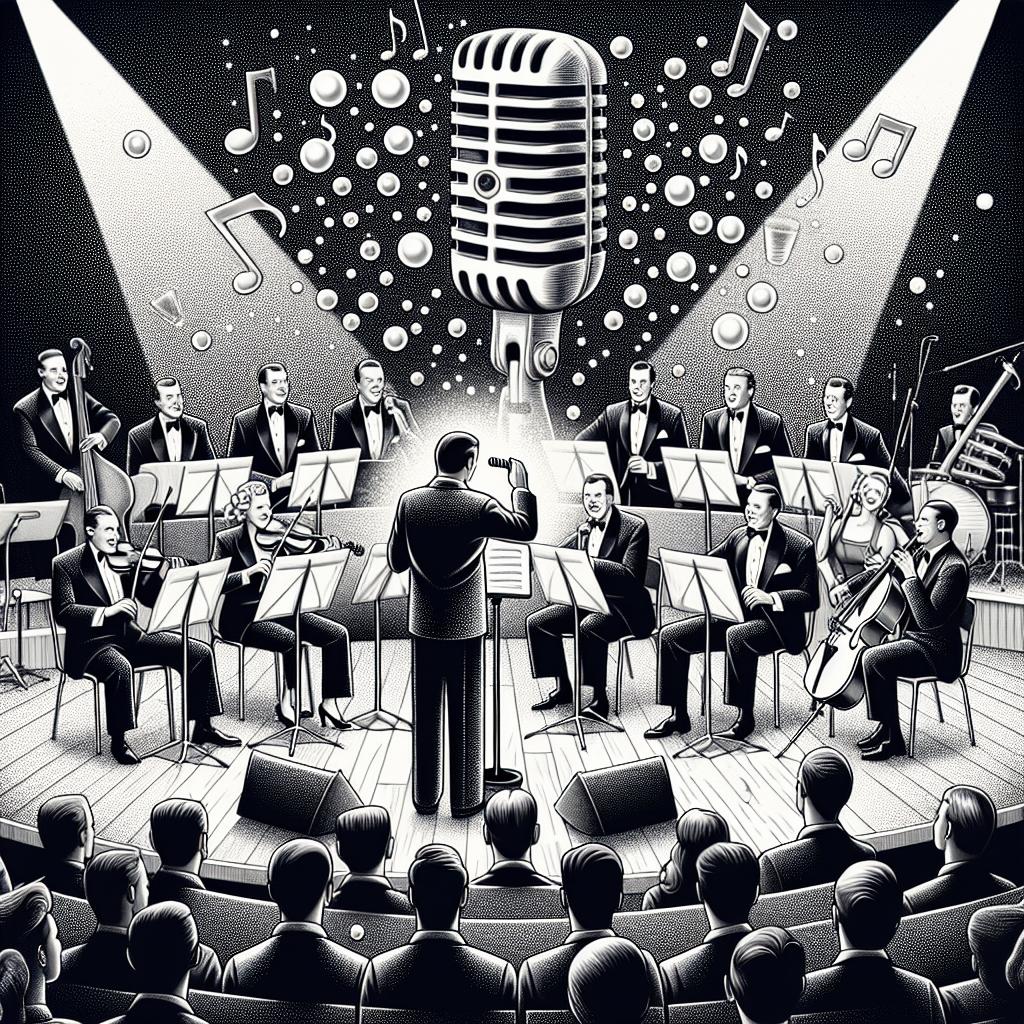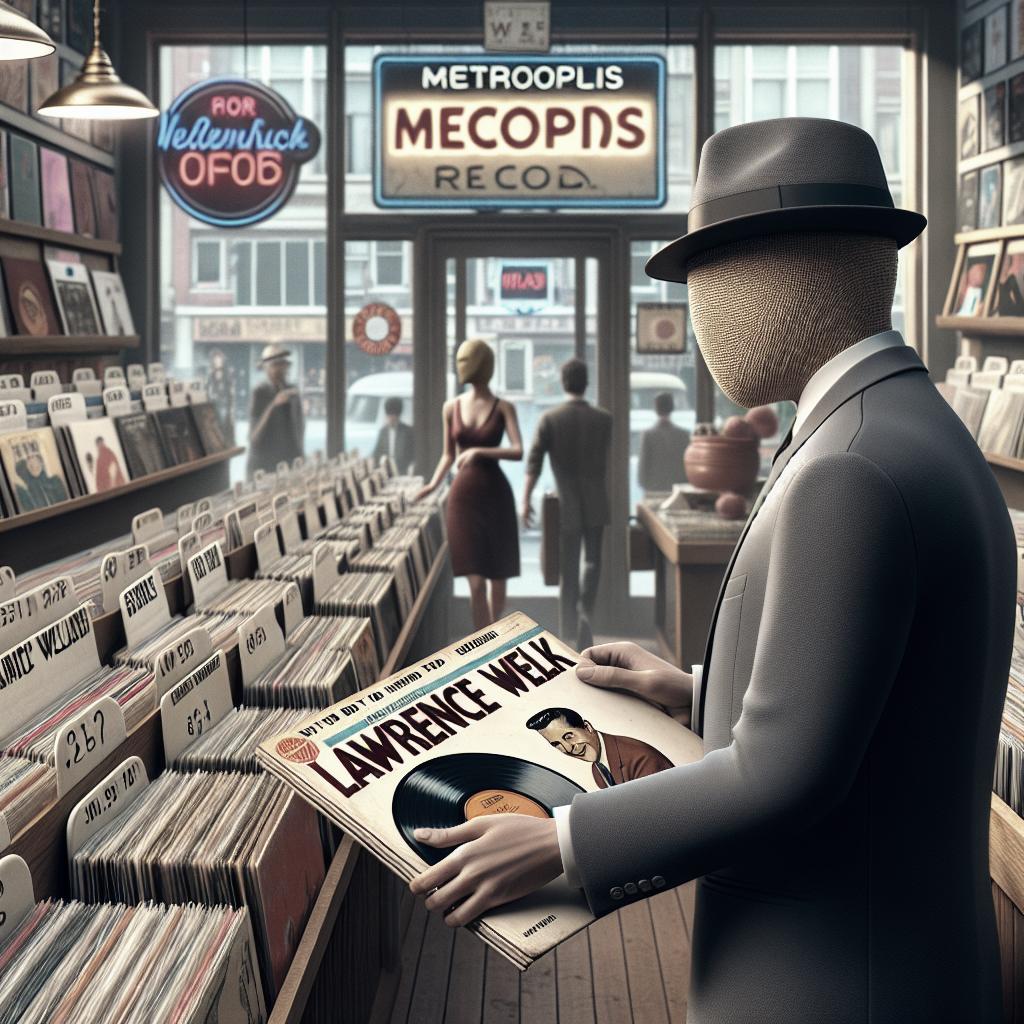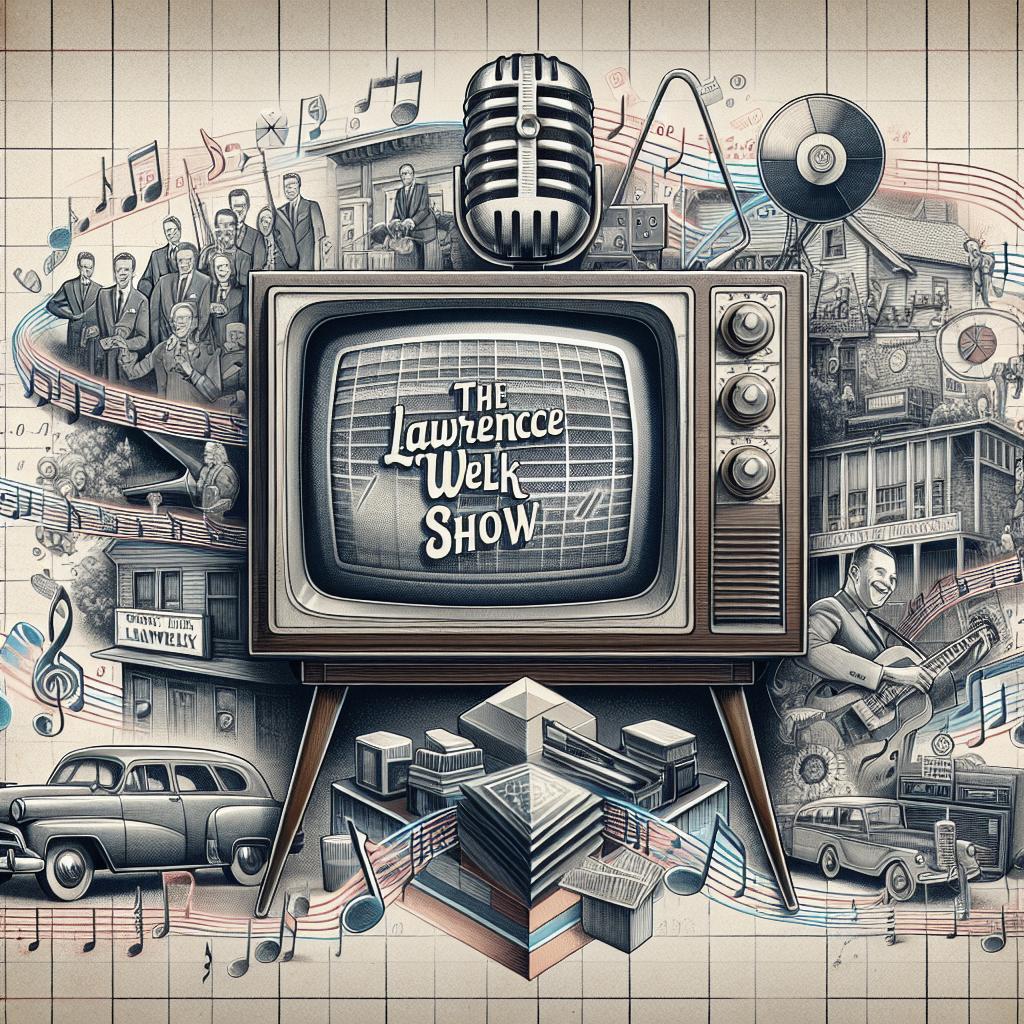< lang="en">
Lawrence Welk was a renowned American musician, accordionist, bandleader, and television impresario best known for hosting “The Lawrence Welk Show,” which aired from 1951 to 1982. His signature style blends big band, light jazz, and polka music, creating a unique and enduring sound that resonates with audiences even today. This blog post explores the intricate details of Welk’s style, focusing on his distinctive musical approach, his television presentation mannerisms, and his ability to create an engaging, family-friendly entertainment experience. We will delve into specific elements that defined his brand, supported by historical facts and documented sources.
Musical Elements
Lawrence Welk’s musical style is best described as “Champagne Music.” This term encapsulates his light, bubbly approach to big band and polka music, which brought a refreshing, celebratory atmosphere to his performances. One of the cornerstones of his music was the use of the accordion, an instrument Welk mastered and prominently featured in many of his shows. The smooth, flowing melodies of his accordion set the tone for the orchestra and created a uniquely inviting ambiance.
Another characteristic feature of Welk’s music was the seamless blending of genres. While big band and polka were his staples, he often infused elements of waltz, jazz, and even early rock ‘n’ roll, albeit in a more mellow form. This eclectic mix appealed to a wide audience and demonstrated Welk’s versatility as a musician and bandleader. Moreover, the perfect synchronization between his orchestra members showcased a level of professionalism and polish that became a hallmark of Welk’s productions.
Television Presentation
The Lawrence Welk Show was groundbreaking in its presentation style, setting a standard for variety shows during its time. Welk’s on-screen presence was marked by his warm, welcoming demeanor and distinctive accent—often referred to as a “champagne accent.” His ability to engage both his live audience and viewers at home made the show a weekly staple in many households. The polished set designs, featuring luxurious backgrounds and well-coordinated costumes, contributed to the show’s high production value.
One of the unique facets of Welk’s television presentation was his emphasis on family-friendly content. He carefully curated performances to ensure they were appropriate for viewers of all ages, making the show a multi-generational favorite. The wholesome content extended beyond the music to include comedy skits, dance routines, and special guest appearances. Welk’s meticulous attention to detail in every episode helped establish an enduring legacy for his show.
Audience Engagement
Lawrence Welk had a unique talent for connecting with his audience, both in-studio and at home. One of his most effective methods was the frequent use of audience feedback to shape future performances. Viewers were invited to send in their song requests, which Welk often incorporated into subsequent episodes. This interactive element fostered a sense of community and loyalty among his audience.
Additionally, Welk’s audience engagement strategies extended to personal appearances and concerts, where he maintained the same level of enthusiasm and connection as he did on his TV show. His approachable nature and genuine interest in his fans’ opinions made him a beloved figure in American entertainment. The emphasis on positive, inclusive entertainment created a lasting bond with his audience, which helped sustain the show’s popularity for over three decades.
Citation Information
For this blog post, several reliable sources were consulted to ensure the accuracy and richness of the content. Key references include “Wunnerful, Wunnerful: The Autobiography of Lawrence Welk” by Lawrence Welk himself, which provides an in-depth look at his career and personal insights into his signature style. “The Lawrence Welk Show: Television’s Music and Dance Party” by Bernadette M. Cass offers an academic perspective on the show’s cultural impact.
Additional information was gathered from reputable online sources such as the official Lawrence Welk website, PBS feature articles, and historical archives from digital platforms like JSTOR. Wherever possible, primary sources such as interviews and firsthand accounts were prioritized to provide the most authentic representation of Welk’s unique contributions to music and television.
Fact Check
Lawrence Welk was born on March 11, 1903, and passed away on May 17, 1992. His television show debuted on local television in Los Angeles in 1951 and was picked up nationally by ABC in 1955. The show continued to air in syndication well into the 1980s, showcasing a remarkable span of popularity.
During his career, Welk produced and conducted for an audience that valued quality, consistency, and family-oriented content. His signature phrases, like “Ah-one, ah-two” and “Wunnerful, Wunnerful,” became catchphrases that permeated American pop culture. Consistently verified through various historical records, these facts cement his position as a pivotal figure in American entertainment history.
Share this post:
Did you enjoy learning about Lawrence Welk’s signature style? Share this post with your friends and family to spread the word about this iconic figure in American entertainment!
Categories
This article falls under several exciting categories:
Summary of Main Points
| Section | Main Points |
|---|---|
| Musical Elements | Champagne Music, use of accordion, blending genres |
| Television Presentation | Warm demeanor, family-friendly content, high production value |
| Audience Engagement | Interactive elements, personal appearances, multi-generational appeal |
| Citation Information | Autobiography, academic sources, primary interviews |
| Fact Check | Verified historical records, signature phrases, show debut and duration |
| Share | Encouragement to share on social media |
| Categories | Music, Television History, American Pop Culture, Entertainment Legends |


